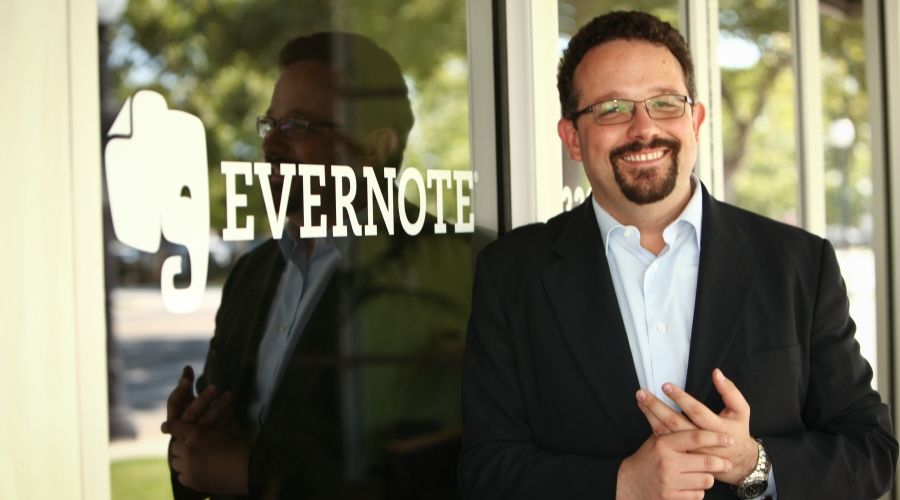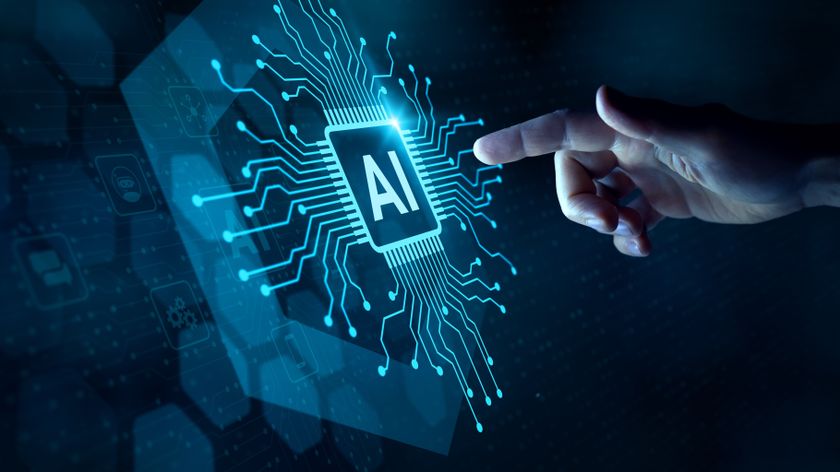'Good software should be at least as smart as your dog'
We talk to Evernote's CEO Phil Libin

Evernote lets you share notebooks with other people you work with, as well as friends and family. It's most useful when there's something in a shared notebook that might be worthwhile for a project you're working on.
That should happen without you ever needing to remember to search, says Evernote's CEO Phil Libin in an interview with TechRadar.
"I want to know that someone on my team has expertise about a particular subject when I'm interested in that subject," he says. "I shouldn't have to go around asking if anyone knows about it. The content needs to support an outcome right now because there's far too much information to deal with effectively otherwise."
Libin isn't a fan of traditional approaches to this problem. He dislikes the term 'knowledge management', and says that many tools fail because they are in not integrated into the way people work. He cites the example of the company trying to set up a wiki that failed because people updated it sporadically, soon making it patchy and out of date.
Evernote is designed to overcome this by combining a company resource with a place where people organise their own information, but the real trick is making it easy to find useful information from other people. Libin says that having to carry out a search is not the answer as it interrupts the thought process.
He discovered that, counter-intuitively, it's more useful to present information when someone is taking notes rather than when they're reading about things, because they are expanding mental energy to create something. This makes them more receptive to anything that can save them work.
"The goal for this is to be so magical you don't notice anything special is going on," he says. "It just feels like you're entitled to this information. We want the experience of Evernote to feel like it's completing your thoughts."
Are you a pro? Subscribe to our newsletter
Sign up to the TechRadar Pro newsletter to get all the top news, opinion, features and guidance your business needs to succeed!
Doing that means starting not with the indexing or search or data analysis that makes it work, but with the experience of how the user will see the information.
Magical experience
"We don't even think about how we're going to implement it; we just design the experience and say this experience would be really magical and then can we can see what's feasible to implement. Sometimes it's actually really, really, really simple."
In the Evernote mobile software, if you start a new note, it checks your calendar to see if you have a meeting scheduled. If you do, it uses it as the title of the note, and if not it uses your current location.
Libin says that users love the feature, and that it wasn't hard to build.
"There's no data science in there. If we had started by trying to figure out mathematically clever things that we could do, we would never come up with 'Look at the calendar'," he explains.
The same is true of a feature in the latest version of Evernote Food, which autocompletes the captions on pictures of food in restaurants.
"People ask if we're doing image analysis or machine learning or passing it on to humans via Amazon's Mechanical Turk, and how can it be so fast… We just pulled the menu of a restaurant and we're autocompleting from that. "
Is that disappointingly simple? "The complexity of the implementation has absolutely nothing to do with how it's perceived - and the value," Libin points out.
"Many development cultures fetishise complexity, especially engineering driven cultures. That's the wrong approach. There are other that fetishise simplicity as its own goal and that's the wrong approach too.
"I think the right approach is start with designing the experience. Once you've designed the experience, sometimes the implementation will be extremely complex, sometimes it will be extremely simple, one is not better than the other.
"It's challenging but once you get into it, in hindsight it's just so obviously the right way to do it. And it's a lot more fun; you get to make cooler things."
Clippy was wrong
If you've been using software for long enough, this kind of contextual information might make you think of Clippy the Office Assistant, asking if you want help writing a letter. Libin is ambivalent about the comparison.
"The whole industry was set back so much by things like Clippy, just because they got the character design so wrong. They were trying to do the right thing but they did it too soon and they did it clunky and it became mock-worthy and for 20 years it was just ridiculing Clippy. We are actually trying to do something that's a good a version of what they were trying to go for. But it needed another 20 years of development to make this happen."
The goal for what he calls augmented rather than artificial intelligence is to be "at least as smart as your dog" when it comes to dealing with you.
"Your dog knows things about you. There are certain mental states your dog is really good at picking up on.
"A computer should at least anticipate what you want, when you're happy or unhappy with something or you're frustrated. It should have a level of intuition around how you're feeling when you're using something. That's incredibly difficult - but it's fun to work on."
Mary (Twitter, Google+, website) started her career at Future Publishing, saw the AOL meltdown first hand the first time around when she ran the AOL UK computing channel, and she's been a freelance tech writer for over a decade. She's used every version of Windows and Office released, and every smartphone too, but she's still looking for the perfect tablet. Yes, she really does have USB earrings.

How can AI help businesses get more from CRM? We asked Workbooks

Windows 11 vs macOS for business: which side are you on?
Most Popular




